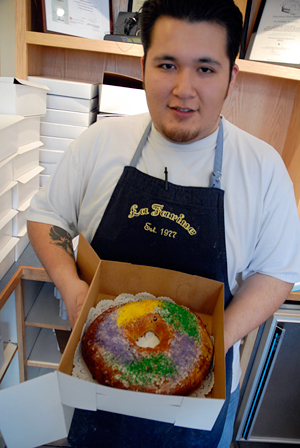
Mardi Gras, Fat Tuesday, Shrove Tuesday: whatever you call it, food and religion come together today into one last pre-Lenten blowout. Tomorrow, Ash Wednesday, marks the beginning of Lent, the 40-day countdown to Easter that was, traditionally, a time of great austerity at table.
As Patience Gray points out in her book Honey from a Weed, about the culinary and cultural traditions she experienced throughout the Mediterranean, the Church's command of six weeks of spare diet--lentils and beans instead of meat, nothing rich or fried or sweet--was as much practical as spiritual. Depending on the cycle of the lunar calendar, Lent stretches across the cusp of late winter and early spring, the time when the larder, and the fields, would be at their most bare. Only dried beans from last autumn's harvest would still be on hand, and wild greens would be sprouting on the hillsides, encouraged by winter's rains and the slowly lengthening days giving a few minutes' more light before sunset each night.
But the sheep, goats, or cows would still be skinny from winter fodder, not yet producing milk, preserving their strength for giving birth to their lambs, kids, and calves later in the spring. The indulgences of Christmas and the New Year would be long past, and on a small subsistence farm, in a wind-scoured, stony mountain village, there would be little to harvest or sell at this season. And so there, conveniently, is the command for privation, making the stark meals of slow-cooked beans and boiled weeds into a commendable form of spiritual discipline.
Nothing succeeds like contrast, however, and so before the cold water and hard cheese of Lent came the glorious blowout of Carnival, a celebration of carne, meat, and all the accompanying carnal pleasures of the flesh. The pantry was stripped of whatever remaining delights it might still hold, like lard, for frying sweet dumplings, doughnuts, beignets, or pancakes; sugar for sweets like King Cake; and alcohol, stirring into any number of mixed punches.